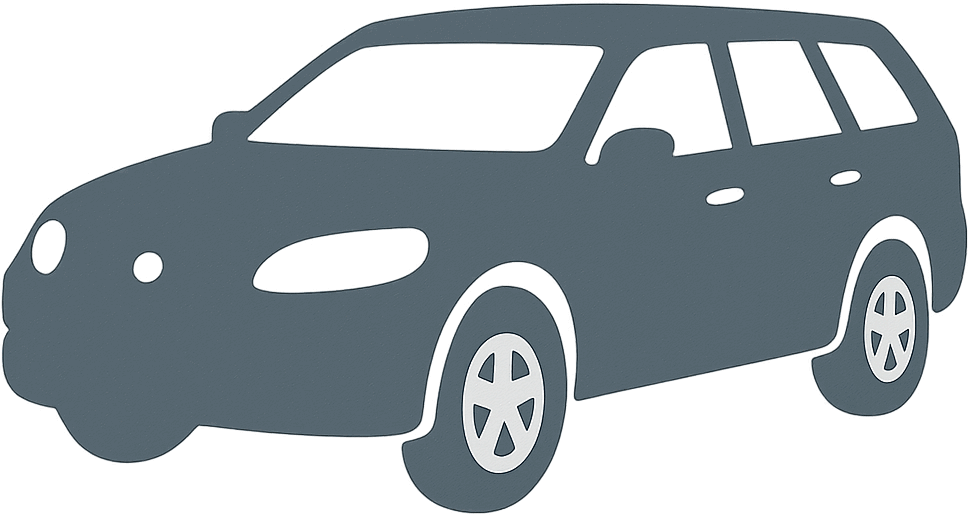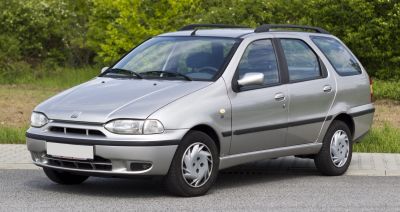 1984 Lada 21041 Dimensions, Size & Specs
1984 Lada 21041 Dimensions, Size & Specs
Measurements of the 1984 Lada 21041, engineered for optimal performance and comfort
| Dimensions | |
|---|---|
| Length: | 4115 mm162.0 in13.5 ft |
| Width: | 1620 mm63.8 in5.3 ft |
| Height: | 1443 mm56.8 in4.7 ft |
| Trunk Capacity: | 345-375 liter12.2-13.2 cu ft |
| Trunk Capacity (Max): | 1035-1340 liter36.6-47.3 cu ft |
| Weight Specifications | |
| Curb Weight: | 1020 kg2249 lbs |
| Maximal permitted Weight: | 1475 kg3252 lbs |
The Lada 2104, specifically the 21041 generation, is a classic station wagon produced from 1984 to 2003. Renowned for its practicality and robustness, this model became a staple vehicle in many regions during its production period. Measuring 4115 mm (161.9 inches) in length, 1620 mm (63.8 inches) in width, and 1443 mm (56.8 inches) in height, the Lada 2104 offers a compact yet spacious footprint ideal for small families and utility usage. Weighing in with a curb weight of approximately 1020 kg (2249 lbs) and a maximum permissible weight of 1475 kg (3251 lbs), the car balances lightweight design with solid construction. The luggage capacity ranges from 345 to 375 liters (12.2 to 13.2 cubic feet) with rear seats in use, expanding substantially to between 1035 and 1340 liters (36.5 to 47.3 cubic feet) when the rear seats are folded down, highlighting its versatility for carrying larger cargo loads. This generous cargo space combined with moderate dimensions makes the Lada 2104 a practical option in the compact station wagon segment, offering reliable transportation with ample storage for everyday tasks or longer trips. Overall, the Lada 2104 21041 generation remains a noteworthy example of Soviet-era automotive design focusing on functionality and simplicity.
Discover the standout features that make the 1984 Lada 21041 a leader in its class
Have a question? Please check our knowledgebase first.
The Lada 2104 21041 station wagon has a length of 4115 mm (approximately 161.8 inches), a width of 1620 mm (about 63.8 inches), and a height of 1443 mm (around 56.8 inches). These compact dimensions make the 2104 suitable for urban driving and parking, while still providing adequate interior space for passengers and cargo.
The curb weight of the Lada 2104 21041 is 1020 kg (2250 lbs), which represents the weight of the vehicle without passengers or cargo. The maximum allowed weight, including passengers, cargo, and the vehicle itself, is 1475 kg (approximately 3250 lbs). This weight capacity ensures the car maintains good handling and safety characteristics when loaded properly.
With the rear seats in the upright position, the Lada 2104 21041 offers a luggage capacity ranging from 345 to 375 liters (12.2 to 13.2 cubic feet), suitable for everyday cargo needs such as groceries or small luggage. When the rear seats are folded down, the cargo space dramatically increases to between 1035 and 1340 liters (36.5 to 47.3 cubic feet), allowing for the transportation of larger items or more luggage, enhancing the vehicle’s practicality as a station wagon.
Yes, the Lada 2104 21041 fits comfortably into a standard home garage. With a length of 4115 mm (161.8 inches) and width of 1620 mm (63.8 inches), it is compact enough to be parked in typical garages which generally accommodate vehicles up to around 6 meters (236 inches) in length and 2.5 meters (98 inches) in width. Its relatively modest height of 1443 mm (56.8 inches) also makes it easy to accommodate in most garage spaces without clearance issues.
The Lada 2104 21041 is a successor to the Lada 2102 and features slightly adjusted dimensions and design improvements. While the 2102 station wagon was based on the earlier 2101 sedan platform, the 2104 refined dimensions with a length of 4115 mm, width of 1620 mm, and height of 1443 mm, representing a practical evolution. The 2104 generally offers better cabin space and improved cargo capacity compared to the 2102, enhancing overall usability without significantly increasing external vehicle size.
Compared to other station wagons from the 1980s, the Lada 2104 21041 is relatively compact. Many Western European or Japanese wagons from that decade, such as the Volkswagen Passat Variant or Toyota Corolla Wagon, often had similar lengths but were sometimes wider and heavier due to different safety and comfort features. The 2104’s dimensions and curb weight (1020 kg) make it lightweight and easy to maneuver, emphasizing functionality and simplicity over luxury, which is typical for Soviet-era vehicles.
The Lada 2104 21041 offers a functional and spacious interior for its class, typical of station wagons designed to carry passengers and cargo comfortably. Although interior dimensions are modest by modern standards, the relatively tall height of 1443 mm provides decent headroom. The seating layout accommodates five passengers, balancing comfort and utility. The rear seat folding functionality increases cargo versatility, making it practical for a variety of passenger and cargo configurations.
Cargo space optimization in the Lada 2104 21041 is achieved through the use of folding rear seats that expand the luggage capacity from 345-375 liters to a spacious 1035-1340 liters. This flexibility allows drivers to adapt the interior space quickly for either passengers or large cargo. The station wagon roofline and rear hatch design further contribute to practical loading and unloading, which were important features for utility vehicles popular in the Soviet Union and Eastern Europe during its production years.
The Lada 2104 21041 is categorized as a station wagon, designed primarily for practical everyday use including family transport, light cargo hauling, and general utility. Its robust construction and simple mechanics made it popular in rural and urban areas, where durability and ease of maintenance were crucial. The vehicle suited both private owners and commercial users requiring a reliable wagon with ample cargo space.
Produced from 1984 until 2003, the Lada 2104 21041 had a remarkably long production run, reflecting its durable and practical design. Over these nearly two decades, the vehicle maintained its classic styling and functionality, though some minor updates were made for improvements in features and reliability. Its long availability made it a common sight across Eastern Europe and parts of Asia. The steady production also meant parts availability and maintenance were straightforward, reinforcing its reputation as a reliable utility wagon.
Discover similar sized cars.

| Production: | 2001-2003 |
|---|---|
| Model Year: | 2001 |
| Length: | 4130-4142 mm162.6-163.1 in |
| Width: | 1626 mm64.0 in |
| Height: | 1512-1528 mm59.5-60.2 in |

| Production: | 1997-2003 |
|---|---|
| Model Year: | 1997 |
| Length: | 4130 mm162.6 in |
| Width: | 1626 mm64.0 in |
| Height: | 1475-1520 mm58.1-59.8 in |

| Production: | 1999-2000 |
|---|---|
| Model Year: | 1999 |
| Length: | 4115 mm162.0 in |
| Width: | 1620 mm63.8 in |
| Height: | 1443 mm56.8 in |

| Production: | 1997-2003 |
|---|---|
| Model Year: | 1997 |
| Length: | 4115 mm162.0 in |
| Width: | 1620 mm63.8 in |
| Height: | 1443 mm56.8 in |

| Production: | 1984-1992 |
|---|---|
| Model Year: | 1984 |
| Length: | 4115 mm162.0 in |
| Width: | 1620 mm63.8 in |
| Height: | 1443 mm56.8 in |
